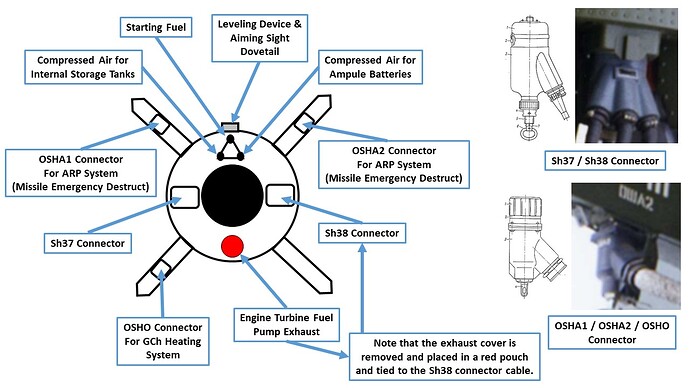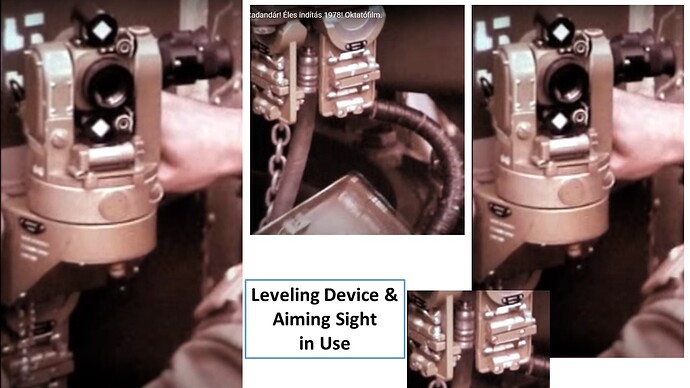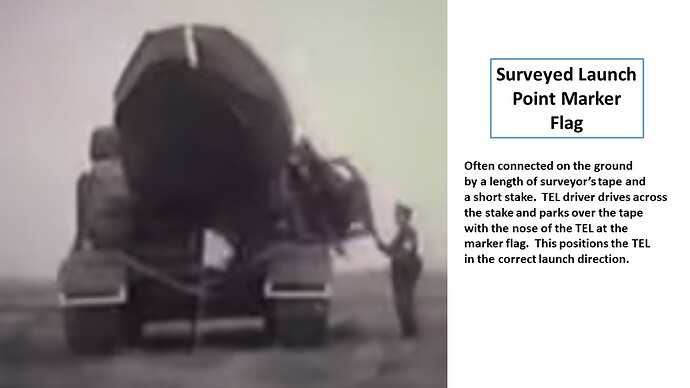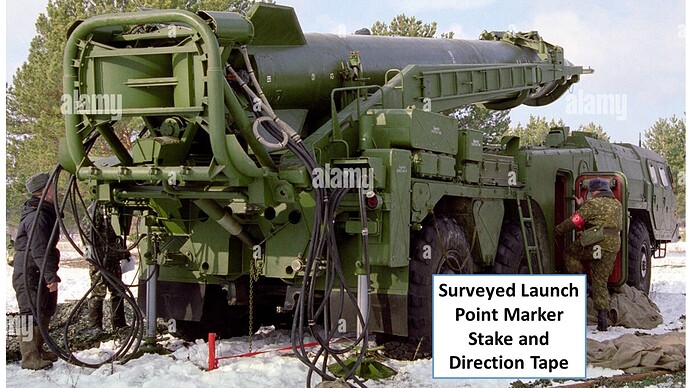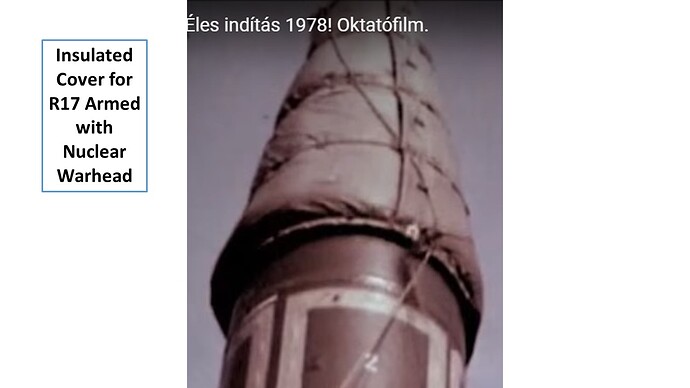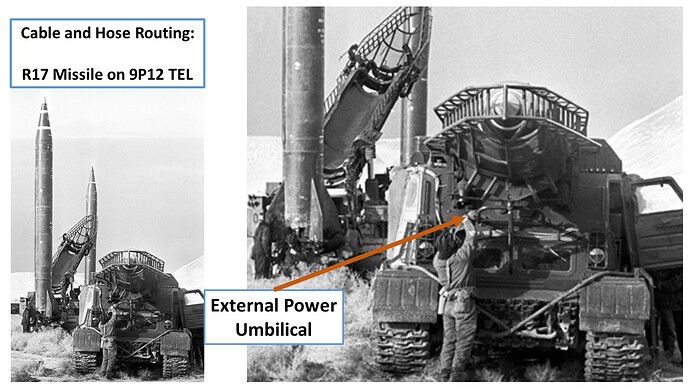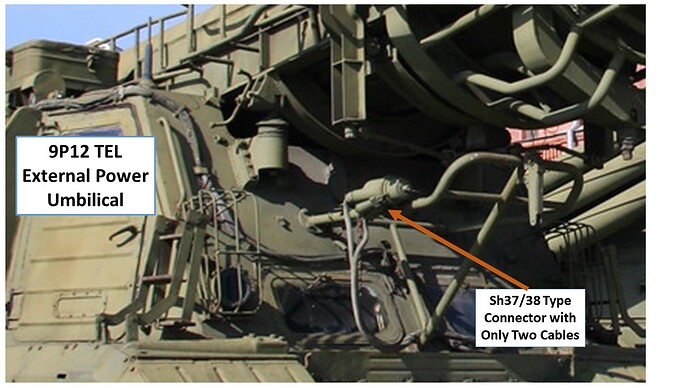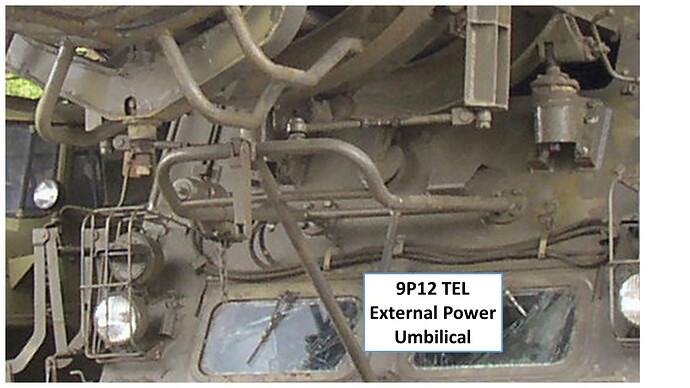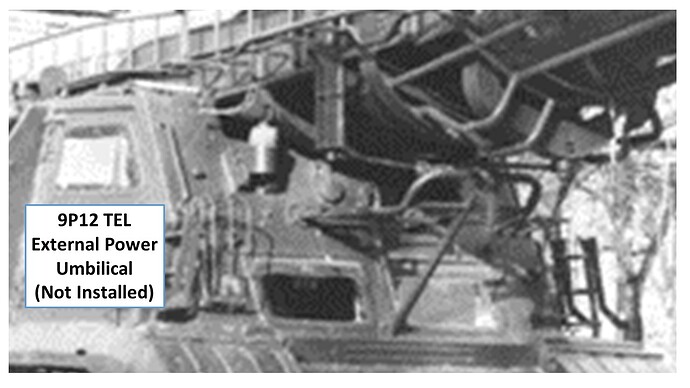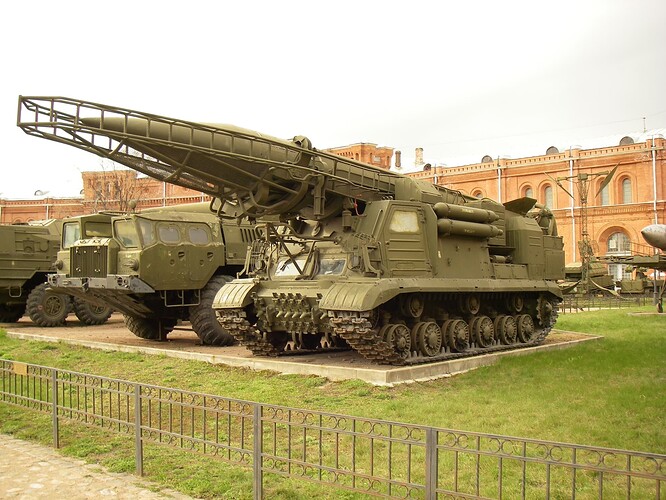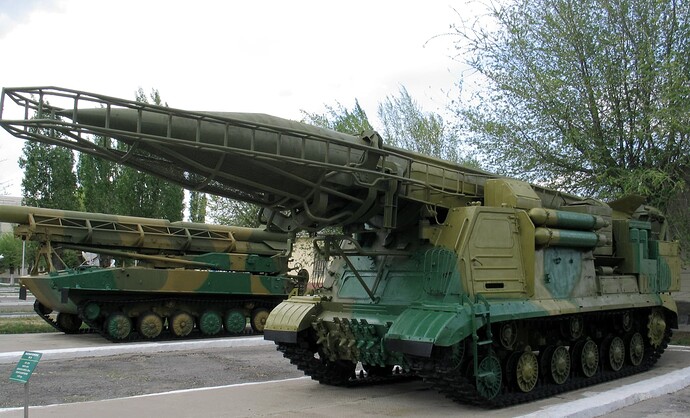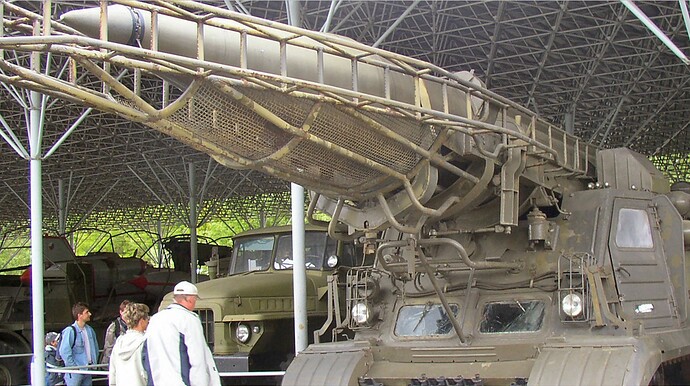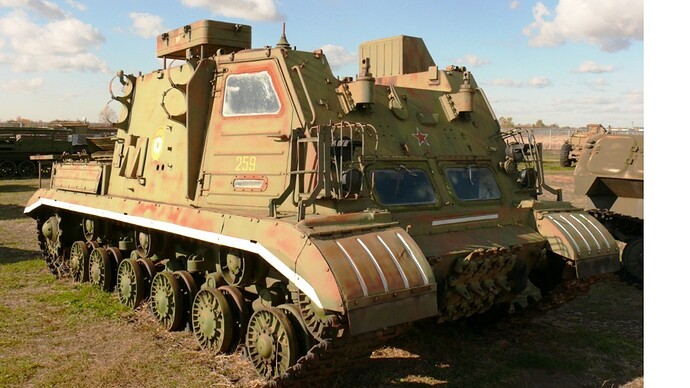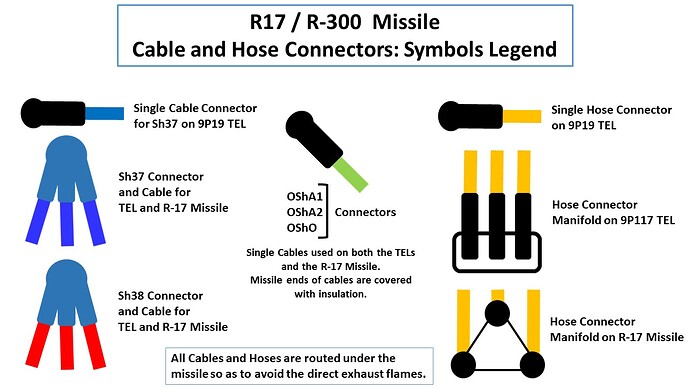@KurtLaughlin
Kurt: There was a relatively short period when the missile could be rigged for launch in the lowered position and then transported for some distance. If I understand the missile battery launch site organization diagrams and maps show as training examples in some of the videos, this distance could be anywhere from a couple of hundred meters up to maybe 6-10 kilometers. All of this depended on the tactical situation and terrain.
So, we also have photos (very few, but still some) that show both the 8U218 and 9P19 TELs carrying missiles fully rigged with all (or some) of their cables and hoses. There is also video of this for the 8U218. (Although I’ve yet to find any video of the 9P19 and R-17 showing such details.)
Normally, though, the missile would not be rigged and transported for any considerable distances on either of the tracked TELs. Operational transportation of the missiles was done by wheeled semi-tractor trailers to test and ready sites where the missiles and warheads were mated, the electronics tested, and the fuel tanks were filled. At that time, the missiles were loaded onto the TELs by crane. (In fact, the missiles were not transported for any significant distances on the tracked TELs because operating vibrations and shocks from the suspension caused unacceptable damage to the missiles. This was a major motivation for the development of the wheeled 9P117 TEL.)
The stabilizing jacks on the 8U218 and 9P19 were mechanical screw-type jacks that were located such that they did not interfere with any of the cables or hoses in their raised or lowered positions. There were also two other short screw-type rams on the rear of the TEL used to level the launching platform and missile - front to rear - once the missile was erected. Complete leveling of the missile was done using four screws located under each of the four fins. Gross aiming for azimuth was done by parking the TEL correctly in the surveyed launch point, and fine aiming was done by slightly rotating the erected missile - clockwise or counter-clockwise - on the launching platform using the Special Theodolite-Collimator system. None of these launch preparations interfered with any of the cable or hoses or vice-versa.
The same can be said for the launching platform which was hinged from the same points as the missile erecting cradle-gantry. The missile could be raised or lowered with the cables and hoses attached, and the cradle-gantry could be moved independent of the launching platform, itself. They were mechanically connected when the missile was raised or lowered but disconnected before the cradle-gantry was lowered (for launching). Once the missile was launched, there was a wench and cable system that was used to raise the launching platform to be reconnected to the cradle-gantry.
(The missile was also loaded onto the cradle-gantry by crane with the launching platform disconnected and lowered. After loading, the platform was wenched up to meet the bottom of the missile and connected to both the cradle-gantry and the base of the missile.)
Interesting enough, I had one of those “minor epiphanies” or “aha moments” yesterday evening and realized that I was perhaps looking at the problem the wrong way. I took a step back and considered how the various systems (hydraulic, pneumatic, electrical and electronic) were arranged on the TEL to provide those functions to the missile. Once I did this, I quickly understood that the routing of these systems on the TEL was the key to understanding where their connections had to be located.
One of the bits of information or details that helped solidify this (new for me) understanding is a pair of long flat, hinged clamps located on the rear of the TEL under the pivot locations for the cradle-gantry-launching platform. Their purpose was unclear until I realized that they are essentially the same designs as can be seen on the sides of the launching platform on the 9P117 TEL. On the 9P117 they are used to control and manage the routing of the cables from the TEL to the missile to keep them off the ground during travel and out of the way during raising, lowering and launching the missile.
On the 9P19 TEL, however, the number and location of these clamps only makes sense if the Sh37 and OShO cables are connected to the TEL on the right rear and routed under the cradle-gantry to the left side to be connected to the missile. If this was the case, then all the other photos and information fits together without any issues or major questions.
At any rate, I now believe that I have solved the major question about the cable and hose routing on the 9P19 TEL. In light of this, I’m also now revising my “modeler’s guide” and will be ready to post it up online very soon.
